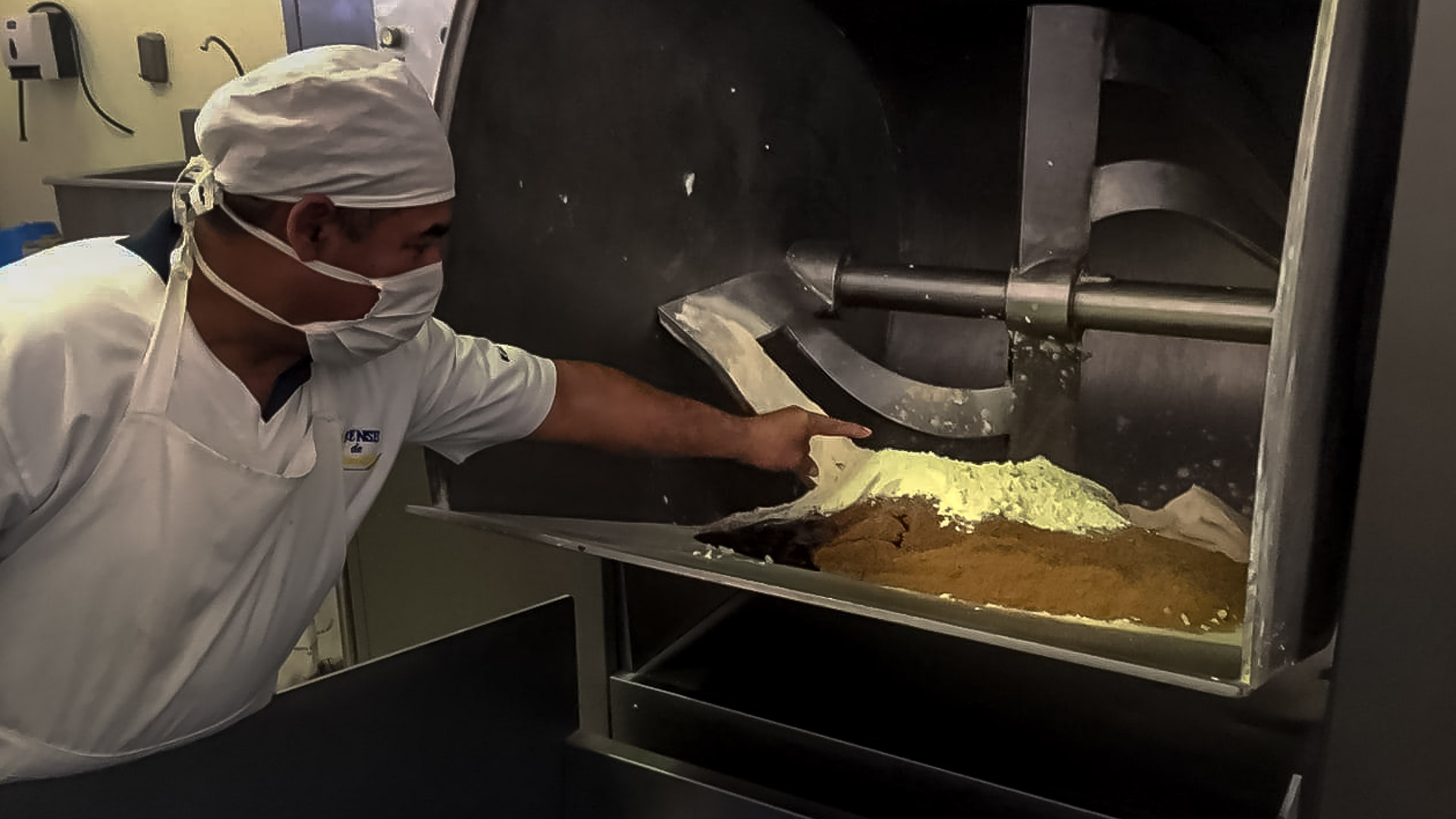

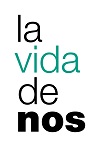 For years, the plastic artist Jesús Pernalete has dedicated himself to fighting hunger amongst his students in Barquisimeto, state of Lara, through projects and foundations that have provided them with a hot meal. No longer able to continue pursuing his mission, as the crisis in Venezuela escalated, he and his team had to look for other ways to helping children overcome malnutrition.
For years, the plastic artist Jesús Pernalete has dedicated himself to fighting hunger amongst his students in Barquisimeto, state of Lara, through projects and foundations that have provided them with a hot meal. No longer able to continue pursuing his mission, as the crisis in Venezuela escalated, he and his team had to look for other ways to helping children overcome malnutrition.

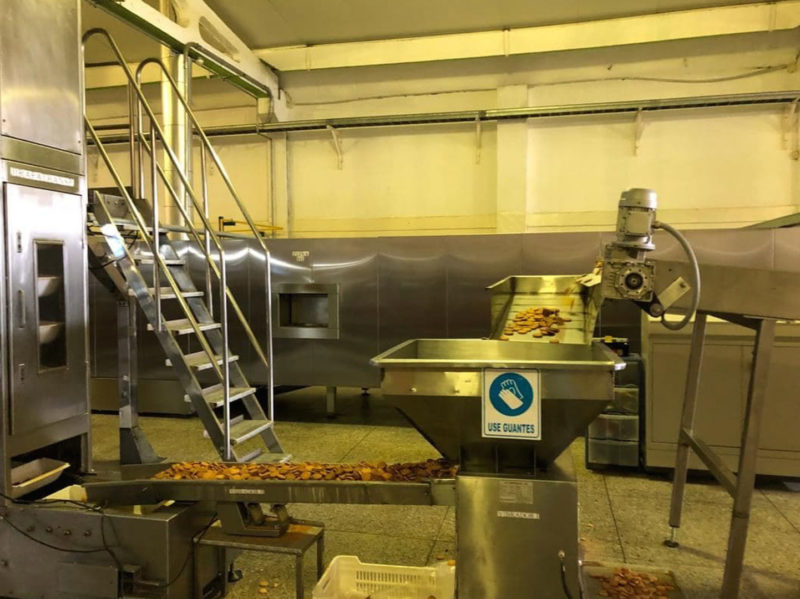
Jesús Pernalete and Andrea González are seating at Café Torontella, a small coffee bar on Carrera 3 in Nueva Segovia, Barquisimeto, state of Lara. It’s a mid-September day in 2018.
Their regular menu includes desserts and wine. In that very place, Jesús, a plastic artist, gives painting workshops. But this afternoon there are no wine or pastries on the table. Nor are they discussing art. They are in a work meeting, and what you see is coffee, sugar packets, teaspoons, and notebooks.
Jesús and Andrea are not alone. They have been joined by nutritionists, pediatricians, chemical engineers, and production engineers. They are all listening to the conversation, quietly.
“We need to come up with a type of food that contains, in one serving, enough nutrients for children to get the equivalent of a meal in terms of fat, protein, vitamins, minerals, and carbohydrates,” says Jesús.
Andrea listens. She is not that familiar with the issue of malnutrition in the country, which, according to Caritas Venezuela, hits 65 percent of children. The situation is compounded by five years of economic recession, an inflation rate that would reach 13600 percent by the end of 2018, and an estimated 79 percent of the population living in extreme poverty by 2019.
Andrea knows the figures, but not the emergency. Jesús, however, has been fighting it for three years.
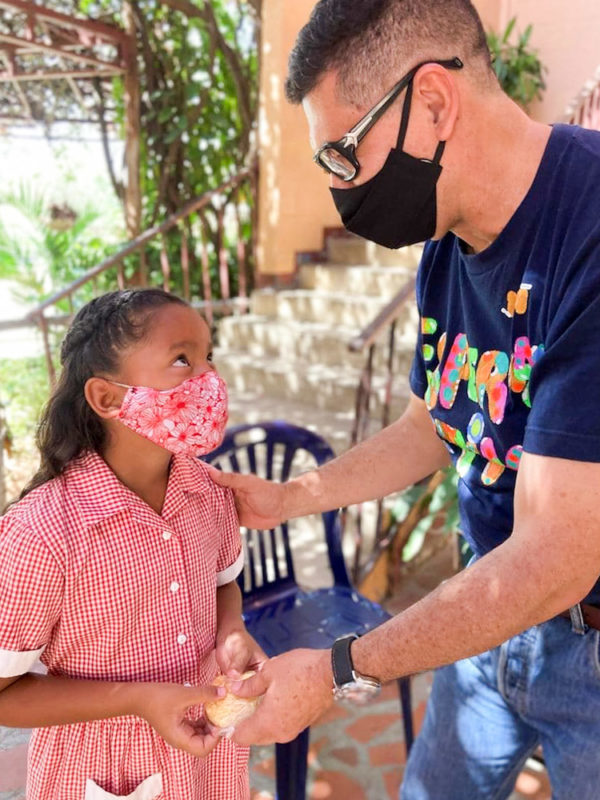
He first came face to face with it in 2015.
Jesús and the citizen’s movement Esperanza Activa [Active Hope] organized a general meeting at Colegio Juan XXIII, a school located in the La Pastora neighborhood of Barquisimeto. The activity consisted in having the children design a creative spiral that would allow them to identify the causes of school violence, the people responsible therefor, and propose solutions to the problem.
There were 100 kids, divided into groups of 10. Each group took the stage, displayed their charts, and presented their conclusions to the school board and representatives. It is a method that Jesús had been implementing since he founded Creatium in 2005. Creatium is an art institution for children between the ages of 8 and 14, and its purpose is not to impart art education but to educate through art. It does not prioritize art techniques: it focuses on values.
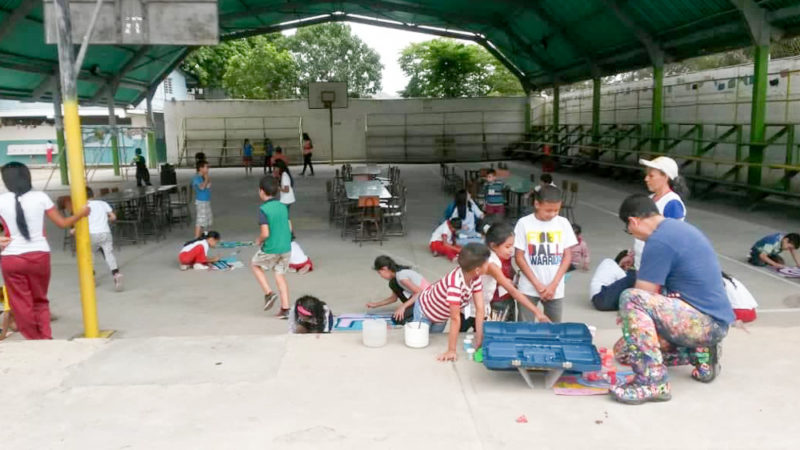
Jesús and his team hoped they would hear about the causes of school violence from the students’ perspective and, if possible, find solutions through the values that art promotes. But they were shocked when they listened to a group of girls, who came on stage to discuss their spiral, claim that violence erupted because the ugly girls were beating up the pretty girls just for being pretty. Jesús stopped the activity, apologized to the audience, and insisted that they explain themselves.
“And how do you decide who is ugly and who is pretty?” he asked.
Their answer was that the girls whose bodies looked fuller were the pretty ones, whereas the ugly ones were the ones whose bodies did not.
The artist, who had been working with Fe y Alegría since 2008, had never heard children compare beauty with body development. That is when he and Chef Andreina Suárez decided to create the Harepaz program, one of the three pillar projects of the Flor de la Esperanza [Flower of Hope] Foundation. Harepaz operated as a food assistance program: its goal was to make sure that the children ate and gained weight in order to contribute to their physical development, without addressing the nutritional aspects involved.
They conducted a pilot test in the Monseñor Romero School. From Monday to Saturday, 600 Fe y Alegría students and 70 teachers came to the school, received school supplies and books, and ate arepas with a ham, bologna, or shredded beef filling for breakfast.
One Sunday, Jesús drove to the school, looking for a painting canvas, and saw several students at the entrance. The school was closed, but the kids were waiting for it to open. Jesús went in and asked the principal, who explained that the children had nothing to eat at home on Sundays and that they came to the school hoping to be given some food.
Then, Jesús remembered the times when he vacationed in Aregue, an arid town near Carora, in the state of Lara. His mother’s family used to make sancochos on the weekends, which were so hearty that they would send his brothers, cousins, parents, and grandparents straight to their hammocks and mattresses for a nap. And he thought that he had to do something because it was not enough to provide the kids with breakfast on weekdays: they needed to be fed on Sundays as well.
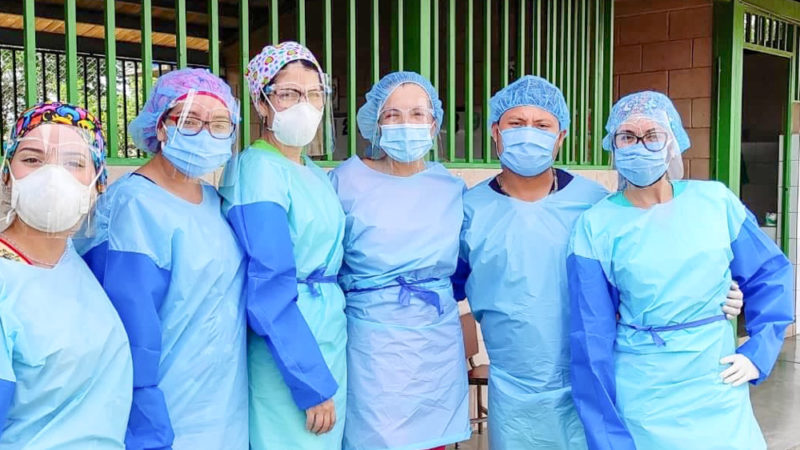
This is how Flor de la Olla [The Soup Pot Flower] came into existence in 2017, with the financial support of Esperanza Activa. Its purpose was to organize weekend sancochos to take food assistance, which was already offered in the form of school breakfasts, up to the contingency level. It was no longer a matter of just making sure that the children ate, gained weight, and physically developed properly. They now had to cover their fat, protein, vitamin, mineral, and carbohydrate requirements because the children were not eating at home.
They soon realized that it was a good idea. The soups they served through Flor de la Olla were so rich and filling that they made the children, parents, and grandparents at the Monseñor Romero School long for a catnap.
Just as Jesús’ family.
In 2017, there was a shortage of cooking gas in Barquisimeto, to the point that people in the city were not sold a gas cylinder if they did not have the Carnet de la Patria [Homeland Card]. Since the western region of the country is arid and lacks woodland, it is difficult for them to find firewood to cook in their makeshift stoves. And schools were not receiving cooking gas or firewood to make breakfast on weekdays, which means that they could not serve the sancochos on the weekends either.
It was also the year when the electric power crisis peaked, there was no drinking water, and public transportation was failing. There were times when they would have some instant cereal such as Cerelac, but no water to prepare it; or the fridge full of chicken, but no power to keep it running; or when those charged with cooking the meals could not get to the schools for lack of transportation, even if there was food to make.
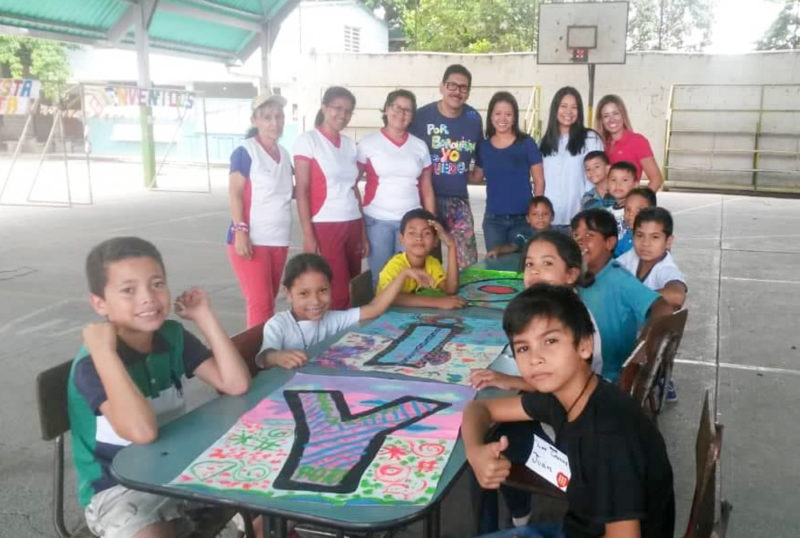
Jesús, aware that things were getting more complicated, proposed that they created some food product that would not need to be cooked inside the school. He insisted that it should be produced by industrialized methods and not artisan. But his team, who did not comprehend the seriousness of the situation at the time, replied:
“But, Jesús, what company will put its time and machinery into making such a thing?”
To find an answer to that dilemma, Jesús brought nutritionists, pediatricians, chemical engineers, and production engineers to volunteer their work. He wanted to know what nutrients an industrial-made food would need to have in order to promote children health. And he looked for clues in reports from the United Nations Food and Agriculture Organization.
In July 2018, two months before the meeting at Café Torontella, Jesús met with Susana Raffalli, who performs nutritional advisory work for Caritas Venezuela. He told her about his foundation’s plans to devise a food alternative that could substitute the school breakfasts and the sancochos that were offered in the Fe y Alegría schools in Barquisimeto: an alternative that was not soup, because there was no firewood or cooking gas, nor a shake, because there was no running or drinking water; an alternative that would not have to be cooked in a kitchen, because there was no public transportation to drive the cooking staff, nor one that would depend on electric power or refrigeration, because in Lara they could go without electricity for stretches of at least six hours a day.
Raffalli listened to him and proposed a solution: a bar that contained the necessary ingredients to substitute a meal. Since the meeting was attended not only by the Flor de la Esperanza team, but also by other organizations, the nutritionist did not refer to the specific characteristics that the food needed to have. But that idea, that of a food bar, stayed in Jesús’ head.
He then met with people he believed could help him develop the nutritional bar. He approached a number of businesspersons, who dismissed the idea because they thought that, in order for stuff to be nutritional, it had to come in the form of, say, a pabellón criollo. He talked to a few doctors, who suggested that he hospitalized the children and put them on a regime. Those people were not directly involved in the management of the humanitarian emergency, so they did not know how to apply the proper crisis criteria.
One day, Jesús was invited to coach an entrepreneurship-training program organized by Empresas Polar Foundation in Turmero, state of Aragua. He finished his workshop and asked the plant manager if she knew of a food production business that could manufacture nutritional bars. She recommended that he talked to the people at Larense de Alimentos, a company that made cookies for them, and that maybe they could make the bar for him.
Jesús returned to Barquisimeto and tasked his volunteers with finding information on the company, until one of them, who was also Jesús’ friend, told him she knew people there and that she thought they worked with Empresas Polar. That was the connection to set up the meeting.
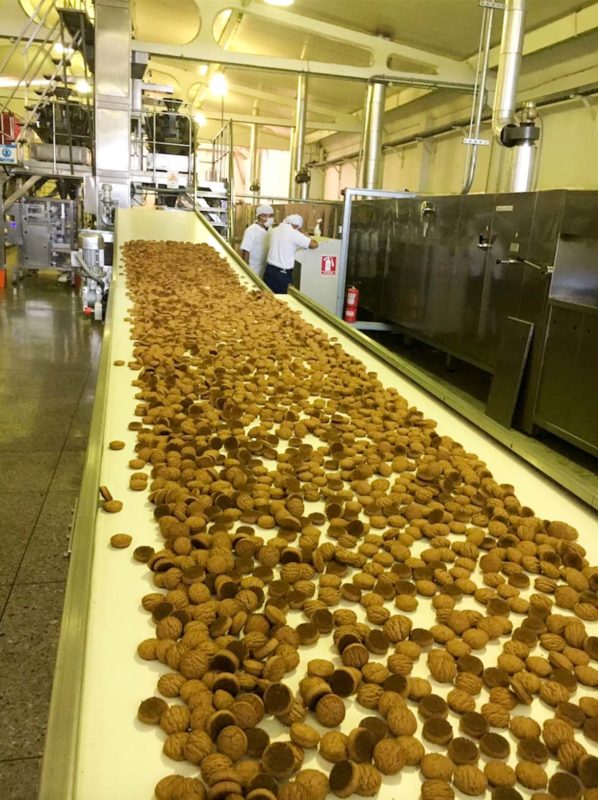
Jesús and Andrea are at Café Torontella. He has just explained her what is it that he needs.
“You can count on us. We are people who like to collaborate with other people. Our company started off small. My dad began producing cookies in a very modest way. But I can’t offer you bars: we make cookies and that’s what we can make for you,” replies Andrea.
“Well, if it is cookies, let’s make cookies!”
Jesús’ team, which is listening attentively to the proposal, insists that a single serving of the food must have all the necessary nutrients so that the children will not have to make several trips to the school just to get the right amount.
They agreed to visit the company.
Two days later, Larense de Alimentos, based in Zona Industrial II of Barquisimeto, welcomed Jesús and his team. You could bear witness to the production process from every corner of the shed-like structure: the flour hopper machine, the 500-kilogram mixer, the conveyor belt, the oven, the cooling chain, the packaging chain, and the cookies.
Additionally, Andrea took the doctors and engineers to the laboratories for testing and mixing. The only thing left to do was to find the right formula and flavor. They even offered them a type of flour for a mixture that would make the cookies taste like chocolate chips or vanilla.
Over the next few months, the Flor de Luz [Flower of Light] team would go to the factory once a week.
Candiluz, which is how they named the project that would address the humanitarian emergency in the Fe y Alegría schools in Barquisimeto, entered a social responsibility contest organized by Venezuelans living in Kuwait.
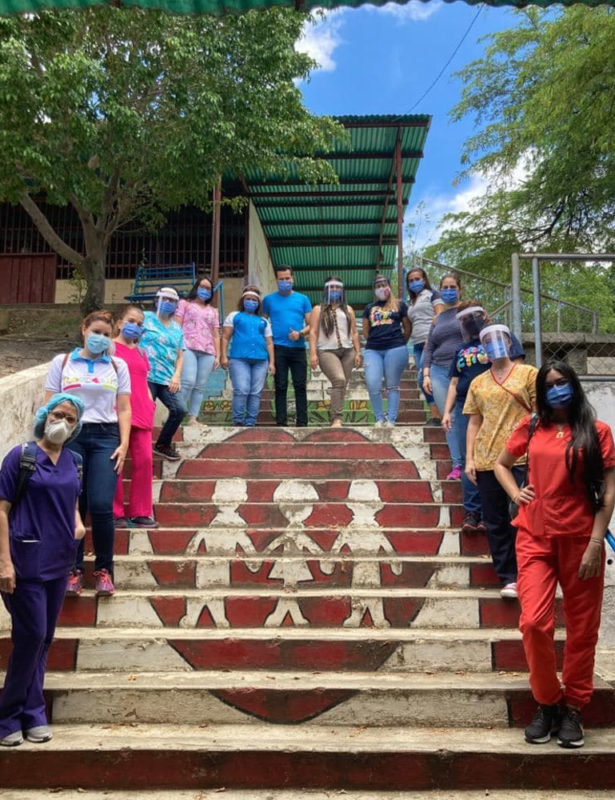
The three foundations that Jesús had created (Esperanza Activa, Flor de Esperanza, and Flor de Luz) began to raise funds for the tests. Several companies were impressed with the idea and donated flour, lecithin, and other materials.
It took the volunteers seven months to concoct a cookie that would not be crumbly, that could be packaged without breaking, that was tasty, and that contained the fats, proteins, vitamins, minerals, and carbohydrates needed to feed the children.
The cookie project won the contest and was awarded a USD 2,000 prize. With that money, they financed the first three months of the pilot test in Botadero de Pavia in a Fe y Alegría school located in Barquisimeto. They weighed and screened 300 children and found that 110 of them were malnourished. So they started giving them Candiluz.
Fe y Alegría supervised the process and, seeing how the children gained weight and improved their academic performance, and how their mood changed, became an advocate for the project.
Word of the success of the product got to Susana Raffalli, who had given the idea to Jesús in the first place. And the Swiss Embassy, with the consent of Caritas Venezuela, began to finance the production of the cookie and distributed it in the Fe y Alegría schools.
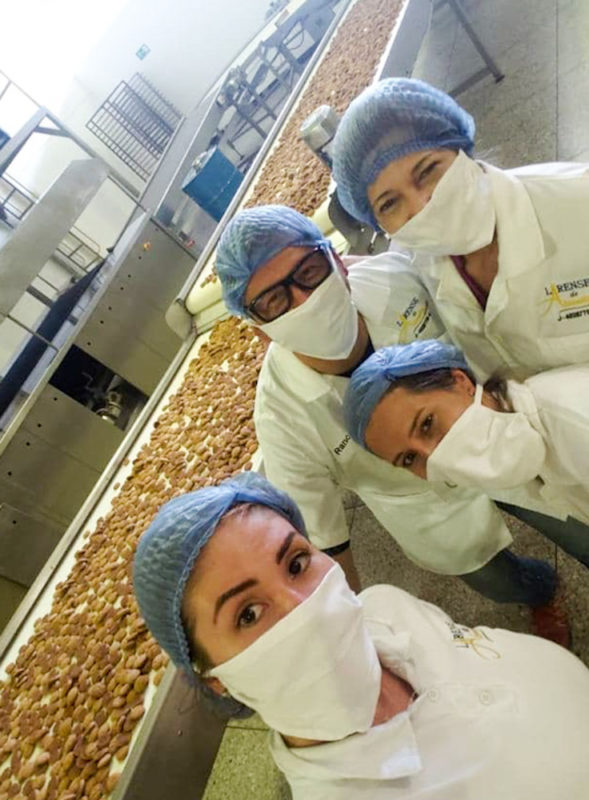
On the other hand, the French Embassy in Venezuela organized a contest, which was open from June to July, 2020, where 317 projects were submitted. Only 25 were selected, including Flor de Luz.
As of September, the Embassy paid for a three-month supply of food to feed 250 children at the Juan XXIII School, there where Jesús and his team began this journey.
During the pandemic, there are volunteers who visit the children’s homes every 15 days and give out 15 packages to each child.
“The parents say that the children are alert and more energetic and that they don’t have to be scolded so much anymore,” says Jesús with a beaming smile that shines with pride and satisfaction for the cookie’s success.
1350 readings
I watch movies, I write, and I teach at the Andrés Bello Catholic University, Guayana Campus. I also listen to hardstyle music. I am only consistently happy doing the latter.